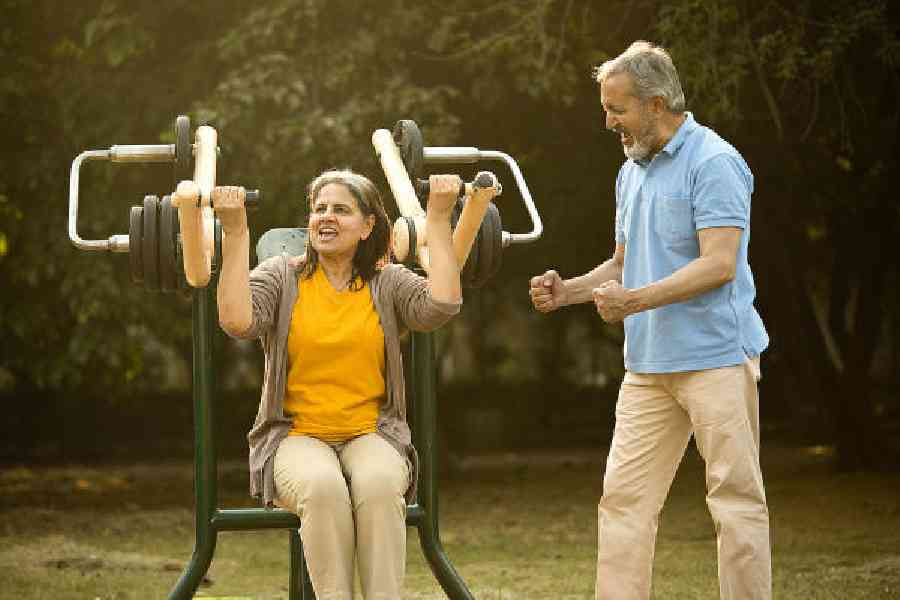When it comes to exercise, muscles and bones are clearly the stars of the show. But to feel your best and age well, you also need to take a little time each week to exercise the body’s supporting cast: connective tissues like ligaments and tendons, especially if you’ve injured them in the past.
How you do it matters. What works for ligaments doesn’t work for tendons, and vice versa.
“Each part responds to a different stimulus,” said Jay Dicharry, a professor of physical therapy at Oregon State University in the United States and the author of Running Rewired. “Just as you don’t treat each of your children the same, you shouldn’t treat all of your body parts the same way.”
Here’s how to keep your tendons, ligaments and joints healthy and less likely to suffer injury. As with any new exercise, consult your physician or physical therapist before you start if you have concerns.
Tendons
They connect muscles to bones. It’s a tough job — transmitting force generated by the muscles connected to them.
“Think of tendons as springs,” said Joel Sattgast, an assistant professor at Eastern Washington University in the US. “As with any spring, over time they stretch out and lose some of that springiness.”
With age, tendon tissues become stiff and brittle, making them susceptible to tearing, either through gradual degeneration from over use or sudden ruptures.
Doctors once prescribed rest for tendon pain, but more recent research has shown that exercising tendons — potentially even if they are sore — is far more effective.
Common problem tendons include the Achilles and those around the elbow and knee. To prevent injuries or keep them from returning, you need to train the tendons and the muscle they connect to slowly and with weights.
“Body weight isn’t enough,” Sattgast said. “You need external, weighted resistance.”
For example, running farther or faster than your body is prepared for can damage the Achilles tendon. To help prevent this, do some slow calf raises (three seconds up, three seconds down) for 25 repetitions two times a week. Do them all at once or broken up. As this becomes easy, progress to raising one leg at a time and eventually hold a medium-weight dumbbell on the side you’re working.
Similarly, if you are worried about your biceps tendon (on the inside of your elbow), do slow biceps curls, eventually increasing the weight. These same principles apply to any tendon in your body, especially if you notice one becoming aggravated.
Ligaments
They connect bones and provide stability. But they also help create an awareness of your body’s position in space, called proprioception. Thus, healthy ligaments can keep an ankle turn from becoming an ankle sprain or lessen the chances of an ACL tear.
Unlike tendons, ligaments don’t degrade from chronic overuse; rather, they usually strain or tear suddenly. Ligament tears also damage nerves, which never come back fully, damaging their special connection to the brain. So you need to retrain the ligaments and surrounding muscles with repeating movement patterns to help them “make smarter decisions” as they move and become more stable, Dicharry said.
As long as your ligament hasn’t suffered damage, you can usually leave it alone. If you’ve suffered a ligament injury in the past, however, you should restore its stability with exercises targeting the surrounding muscles. Where tendons love high loads and lower repetitions, ligaments respond better to low loads and high repetitions.
If you’ve ever sprained your wrist, for example, use a tennis racket and ball to restore its stability. With the racket in your hand and the inside of your wrist pointing up, gently bounce the ball up and down on the racket.
To retrain the tissues surrounding a common ankle sprain, try a single-leg balance. With bare feet, lift one leg in the air for 30 seconds without wobbling. Keep your foot flat by consciously pressing your big toe firmly into the ground. For an added challenge, stretch an exercise band around a table leg and hold down the other end with your toe as you balance. As you get better, try it with your eyes closed.
Joints
Any place where two bones meet and move — knees, elbows, hips — could be considered a joint. As you age, the fluid in joints decreases, protective cartilage thins out and you might feel stiff and “creaky” or even suffer from osteoarthritis.
For many years, experts assumed that too much movement damaged joints. Running will ruin your knees, the theory went. The truth is that joints love movement, as long as itis moderate.
The key to healthy joints is giving them a variety of motions across multiple planes, Dicharry said. For example, if your wrist joints are sore, find motions that move them in the maximum number of directions.
For instance, take a wad of Silly Putty in one hand and roll it into a ball, and then a hot dog shape, and then make a loop. Put your fingers inside the loop, open them up and stretch out the loop. Repeat this sequence again and again for about two minutes per side.
This same multiplanar, multidirectional strategy can be applied to other joints. Movements like standing rotations can be good for your hips, which tend to mostly move back and forth. Because most of our shoulder movement rotates toward our body, try working your rotator cuff externally instead.
Like ligaments, joints strengthen with high repetitions and low loads. When targeting your joints, try 40 repetitions of the movement before switching sides, aiming for two sessions each week.
NYTNS










